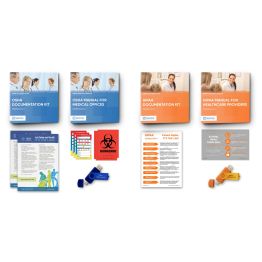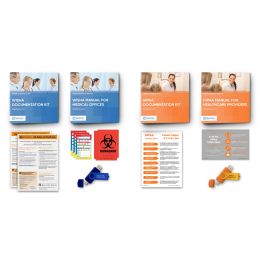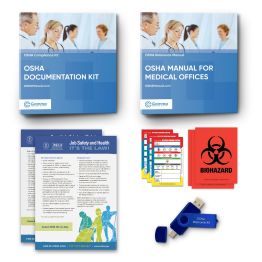“Are California state OSHA regulations significantly different from federal OSHA regulations for healthcare? If I live in California, how do I comply with state OSHA regulations?”
While many regulations are similar between Cal/OSHA and federal OSHA as far as the healthcare and dental care industries are concerned, there are also several differences, some of which are listed below:
-
1. Cal/OSHA has the Injury and Illness Prevention Standard, while federal OSHA does not. The Injury and Illness Prevention Standard is based on the belief that employers, through a systematic approach to recognizing and correcting workplace hazards, can reduce workplace injuries and fatalities significantly. This standard mandates a written Injury and Illness Prevention Program (IIPP). In fact, the most frequently cited Cal/OSHA violation is the absence of an IIPP.
-
2. California is the only state that has an ergonomic standard and complying with ergonomic standard is mandatory. California ergonomics regulation requires an employer to implement a Repetitive Motion Injury (RMI) prevention program when at least two employees, performing the same job or work activity, develop repetitive motion injuries. The program should include a worksite evaluation, control of exposures that caused the injuries, and training employees.
-
3. As far as Bloodborne Pathogen Standard is concerned, Cal/OSHA regulations differ slightly from federal OSHA regulations. For example, California requires more information in the selection and evaluation procedures for sharps needles and also in the sharps injury report.
-
4. California has Aerosol Transmissible Disease (ATD) regulations while federal OSHA does not. The vast majority of health care employers, and certain other employers whose employees are likely to come into contact with persons infected with aerosol transmissible diseases, are required by the regulation to take affirmative steps to ensure that the diseases are contained as much as possible. ATDs include SARS, Tuberculosis, Measles, and Influenza among others. Medical and dental employers must complete an ATD exposure control plan.
About Us:
At Gamma Compliance Solutions, we come to work every day because we want to solve the biggest problem in regulatory compliance: helping you make sure you have met all the requirements. Over the years, we have developed different compliance packages to suit practices at any stage in the OSHA and HIPAA compliance process. We have designated this area of our blog to post important updates and share key resources and guidelines you need to best protect your employees and yourselves. In addition to checking this area of our blog, follow us on social media to receive notifications when we share important information.





